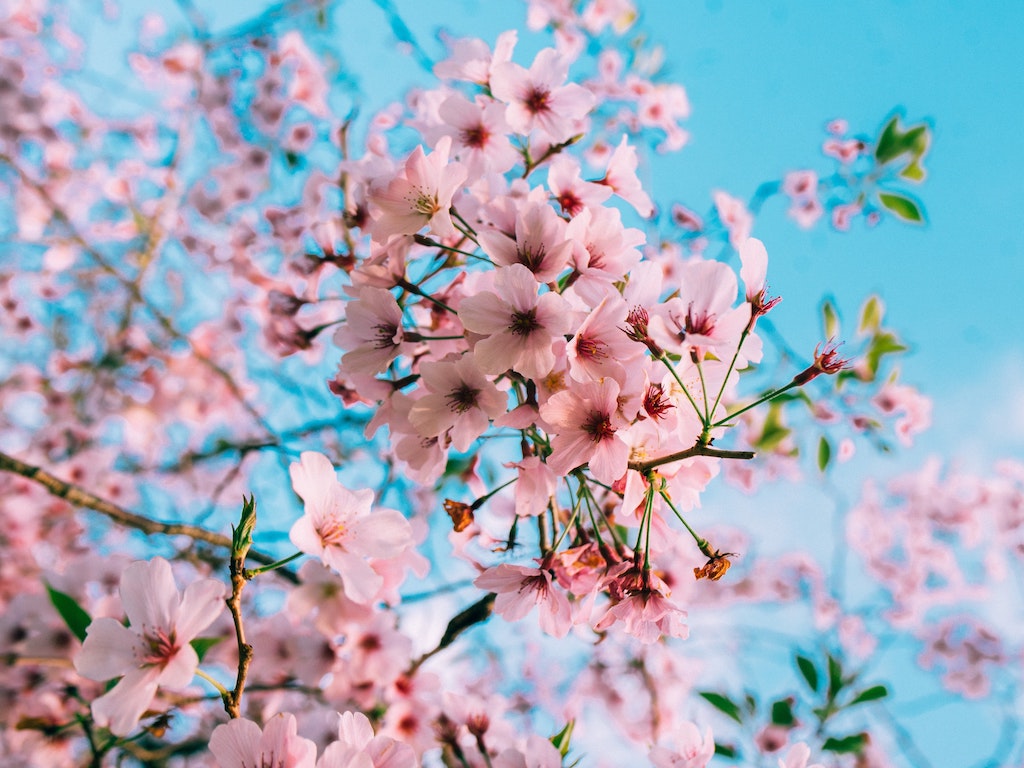4 Mins Read
By: Roku Goda
Cherry blossoms have long been loved by Japanese and celebrated in poetry as harbingers of spring. In the early Heian Period (794-1185), Ariwara no Narihira penned a piece about how people became very excited every spring when the delicate pink flowers bloomed.
This year’s cherry blossom viewing parties were drastically reduced after government officials urged the public to avoid congregating in major parks because of the novel coronavirus outbreak. However, global warming also threatens to produce spring seasons when there may be no cherry blossoms anywhere in Japan.
The “somei-yoshino” variety of cherry blossoms can be found almost everywhere in Japan, except for some parts of Hokkaido, the northernmost main island.
But reports in recent years said cherry trees in parts of Kagoshima Prefecture on the main southern island of Kyushu developed buds that do not bloom, according to Toshio Katsuki, who heads the team in charge of cherry blossom preservation at the Tama Forest Science Garden of the Forestry and Forest Products Research Institute.
Although Katsuki cautioned against jumping to conclusions because many of the cases involved weakened conditions of the trees and insufficient management, he said, “Global warming may have had some effect.”
One goal of the 2015 Paris Agreement on climate change is to keep the global rise in temperatures to under 2 degrees of levels before the Industrial Revolution.
But one hypothesis for Japan is that average temperatures between 2076 and 2095 will be 4.5 degrees higher than the levels between 1980 and 1999. Under such climate conditions, cherry blossoms will not bloom in the southern prefectures of Kagoshima and Miyazaki. That calculation was made by researchers at Kyushu University based on the Japan Meteorological Agency’s worst-case scenario in terms of warming.
While there is no knowing if a day will come when cherry blossoms no longer bloom in many parts of Japan, some scientists are trying to develop new varieties that can withstand climate change.
In Susono, a city in eastern Shizuoka Prefecture located southwest of Tokyo, the “Nishina otome” variety of cherry blossoms were blooming along a sun-drenched hillside. The variety was officially registered in 2011, and saplings are being shipped out to tree-growing farmers to produce cut flowers.
Shigehisa Ishii, 60, operates a sapling farm and has been involved in developing new varieties of cherry trees.
“The plants do not wither even in warm Shizuoka, and the blossoms last for a long time,” Ishii said. “It is a cherry blossom that will survive even if warmer winters should continue.”
Ordinarily, cherry blossoms need both warmth and cold to properly bloom. Buds that bloom into the flowers in spring begin forming around the summer of the previous year. Growth temporarily stops as the tree hibernates.
The cold of winter creates the phenomenon that stirs the bud to break out of its dormant state. The bud grows and blooms with the rising temperatures in spring.
However, the Nishina otome can bloom even if it is not exposed to low temperatures.
Born from an accelerator
Among the many different varieties of cherry blossoms, the Nishina otome is unique because it was created not in the traditional breeding manner but by using a particle accelerator to collide atoms and ions.
The particle accelerator is located at the Riken research institute facility in Wako, Saitama Prefecture.
Tomoko Abe, a team leader, is promoting a project that bombards the plants with accelerated carbon ions, causing mutations that can lead to cherry varieties with new characteristics.
In a 2006 experiment, carbon ions bombarded branches of the “Keio zakura” variety that is often sold as cut flowers because of its pretty shape. Although some branches died, one type grew successfully and was able to produce flowers after it was grafted onto another tree.
While the Keio zakura variety requires low temperatures in winter to bloom, the new type did not have such a need.
Ishii, who has long bred cherry blossoms, said the project was a major revelation to him.
That new variety was named after Yoshio Nishina, the late physicist who had deep ties to Riken.
Ishii continued with his breeding practices and produced other varieties that bloomed even without the low winter temperatures.
According to Hisayo Yamane, an associate professor of horticulture at Kyoto University, plants hibernate as a defense mechanism against the winter cold. While the main aspects of the hibernation process are known, the total picture has not yet been grasped because it involves the relationships among a large number of genes.
Although a gene related to hibernation may have mutated in producing the Nishina otome, a more detailed discovery of the process has not been made.
Developing, cultivating new varieties
Cultivation of other varieties developed to withstand global warming has started in Kyoto, Tottori and Saga prefectures.
Farmers in Susono have begun trial shipments of some of these new types as cut flowers that can be displayed in vases or used to decorate hotels.
Toshiatsu Hattori, 66, is a strawberry farmer, but he has also planted between 70 and 80 cherry trees and began selling the flowers locally this year.
“I hope to commercialize cherry blossoms as cut flowers,” he said.
Hayato Suzuki, 24, is the employee at the JA Nansun agricultural cooperative in charge of cherry tree farmers. Last autumn, he sent samples of cut flowers that bloomed in Susono to a market in Tokyo. He hopes that will lead to full-scale sales of the flowers from this year.

This story originally appeared in The Asahi Shimbun and is republished here as part of Covering Climate Now, a global journalistic collaboration to strengthen coverage of the climate story.
Lead image courtesy of Unsplash.



